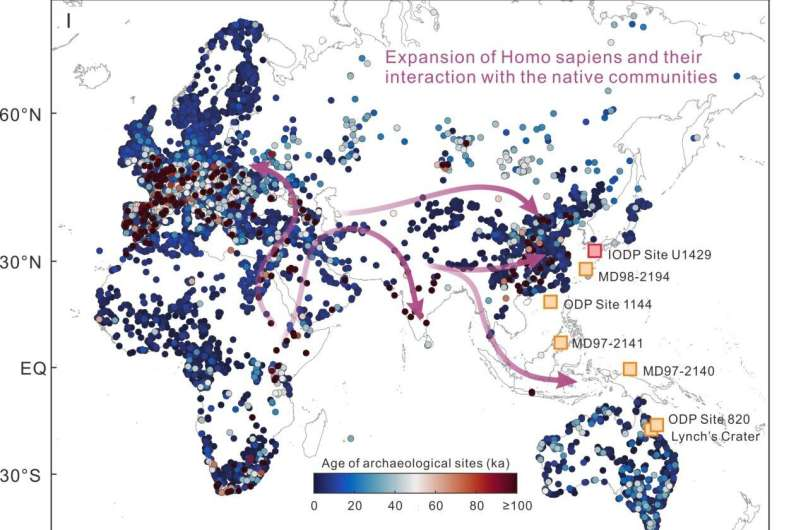A new study has uncovered compelling evidence that humans were extensively using fire as far back as 50,000 years ago—much earlier than previously believed.
Fire has shaped Earth’s ecosystems for over 400 million years, influencing habitats, climate systems, and the global carbon cycle. While naturally occurring wildfires have always played a role in shaping the environment, the emergence of humans marked a turning point. Fire was no longer just a natural force—it became a powerful tool.
Yet, the timeline for when humans began consistently using fire to alter their surroundings has remained unclear.
To help resolve this mystery, a team of scientists from the Institute of Oceanology of the Chinese Academy of Sciences (IOCAS), in collaboration with researchers from Germany, France, and other Chinese institutions, analyzed a 300,000-year-old sediment core from the East China Sea. Their findings, recently published in the Proceedings of the National Academy of Sciences, reveal a dramatic shift in fire activity around 50,000 years ago—likely driven by early Homo sapiens.
“Our findings challenge the long-held assumption that significant human impact on fire regimes began only during the Holocene,” said Dr. Zhao Debo, the study’s lead author.
The team focused on pyrogenic carbon—the microscopic remnants of vegetation partially burned in fire. This material, preserved in layers of sediment, acts as a geological fingerprint of ancient fire activity. The core showed a marked rise in pyrogenic carbon starting about 50,000 years ago, indicating a surge in regional fires. Similar patterns have been observed in archaeological records from Europe, Southeast Asia, and the Papua New Guinea–Australia region, suggesting a broader, continental-scale trend.
This period coincides with the rapid global spread of Homo sapiens, who began migrating out of Africa between 70,000 and 50,000 years ago, replacing older human populations across Europe and Asia. As these populations expanded, so did their reliance on fire—not just for cooking, but also for warmth, protection, hunting, and landscape management.
“Even during the Last Glaciation, humans were likely already reshaping ecosystems and altering carbon flows through the use of fire,” added co-author Prof. Wan Shiming.
Beyond its practical uses, fire played a foundational role in the development of human societies. It enhanced nutrient absorption from food, improved survival in harsh climates, and may have accelerated technological and cultural evolution.
The study’s conclusions raise important questions about the timeline of human environmental impact. If early Homo sapiens were already influencing the carbon cycle tens of thousands of years ago, our understanding of pre-industrial climate baselines may be due for revision.
As climate scientists grapple with modeling future change, this research offers a sobering reminder: humans have been shaping the Earth far longer than we once believed.






